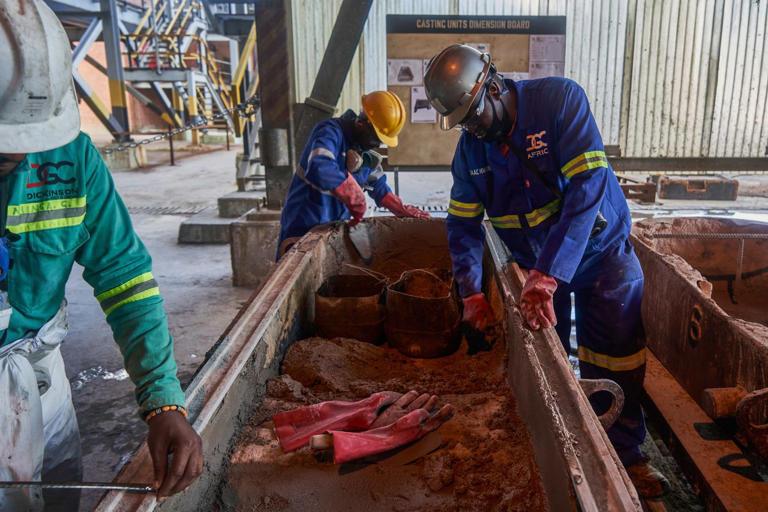In recent times, the global economic landscape has been significantly shaped by the financial strains faced by one of the world’s leading copper producers. This event spurred proactive measures by the Biden administration, which embarked on discussions with potential investors regarding the acquisition of a stake in the company’s Zambian mines, valued at an impressive $3 billion. The primary objective behind these discussions was crystal clear: to prevent the clutches of Chinese control from tightening around these strategic assets and to safeguard against the potential ramifications of the Asian superpower exerting its dominance over the global supply chain of essential metals and minerals.
This move by the Biden administration reflects a broader, ongoing global trend characterized by a heightened demand for copper. This demand surge is propelled by the metal’s pivotal role in various critical industries, including but not limited to electric vehicles, transmission lines, and the robust data centers powering the AI revolution. The recent monumental $43 billion takeover bid by BHP Group for Anglo American serves as a compelling testament to the intense competition in the copper market. Although Anglo initially rebuffed BHP’s offer, the subsequent expression of interest from other market players underscores the feverish pursuit of copper assets and the resultant heightened interest in securing these valuable resources.
In light of these developments, the US government has raised legitimate concerns regarding the potential consolidation of copper assets and its subsequent impact on the global supply chain. While the US may not have direct oversight over such corporate dealings, government officials have diligently communicated their apprehensions to key executives within Anglo. Their fears revolve around the possibility of consolidation limiting the global supply of copper and potentially providing China with undue leverage over critical commodity markets.
For the United States, these recent developments underscore the imperative of securing access to critical metals and minerals essential for the transition towards green energy. However, with limited direct investment capabilities at its disposal, the US government is compelled to forge strategic partnerships with private enterprises and allied nations to ensure uninterrupted access to these vital resources. The tireless efforts led by President Biden’s senior adviser, Amos Hochstein, epitomize this concerted push, involving engagements with governments and investors across the globe to champion investments that align with US national interests.
A notable success story stemming from these efforts is the recent involvement of the UAE’s International Resources Holding as a new equity partner in Zambia’s Mopani Copper Mines. Additionally, the US has demonstrated its commitment to bolstering infrastructure development in regions endowed with significant reserves of critical minerals, such as the Lobito Corridor spanning Angola, Congo, and Zambia.
Central to these efforts is the pivotal role played by the International Development Finance Corp. This federal agency has substantially ramped up its investments in the mining sector, thereby fortifying access to critical resources. Noteworthy examples include significant funding allocated towards a multibillion-dollar copper mine project in Pakistan and steadfast support extended to TechMet, an Irish company specializing in critical metals and minerals.
Conversely, Chinese mining enterprises, backed by substantial governmental support, have embarked on a relentless spree of asset acquisition on a global scale. This trend, particularly pronounced in Belt and Road countries, underscores the escalating competition between Western democratic values and authoritarian regimes for control over pivotal resources.
Despite the formidable challenges posed by this evolving landscape, American companies remain resolutely committed to participating in resource development projects worldwide. A prime illustration of this commitment is the expressed interest of Chilean Cobalt Corp. in acquiring Chemaf, a metals producer in Congo. While logistical and financial obstacles may pose significant hurdles, US government agencies continue to extend unwavering support to American enterprises seeking to venture into resource-rich territories.
In essence, the frenzied pursuit of copper assets reflects a broader geopolitical contest for control over critical resources, accentuating the critical importance of strategic investments aimed at safeguarding national interests and promoting democratic values on a global scale.
